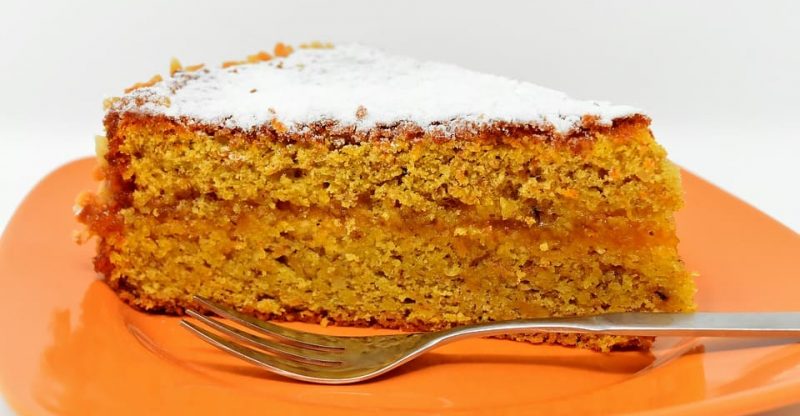What is Glycerol Monostearate (E471) in Food & its Uses?

Components | Types | Production | Uses | Safety | FAQs
Glycerol monostearate or glyceryl monostearate, is commonly called its abbreviation, GMS. This ingredient is a widely used nonionic emulsifier in food with the European food additive number E471. It belongs to the emulsifier category of mono- and diglycerides of fatty acids.
Components
GMS is a mixture made of:
- Glycerol monostearate: the major component, commonly finds its application in baked goods.
- Glycerol distearate: mainly used in cosmetics.
- Glycerol tristearate: the most hydrophobic one among three and can also be used as an emulsifier in food (1), also as a hardening agent in candles and soap (2) and other industrial uses.
The above three components can be called glyceryl stearate.
GMS may also contain glycerol mono-, di- and triester of (palmitic acid or other fatty acids) present in commercial stearic acid.
Types of Glycerol Monostearate
According to the content of glycerol monostearate, GMS is generally classified into three types in the market:
- GMS 40: the assay of glycerol monostearate not less than 40%
- GMS 60: the assay of glycerol monostearate not less than 60%
- DGM (distilled glycerol monostearate) which has the highest level, not less than 90%
They all share the function of emulsifying, dispersing, stabilizing, moisturizing and foaming.
How is Glycerol Monostearate made?
GMS can be synthesized in two ways as mentioned in the manufacturing processes of mono- and diglycerides:
- Transesterification process: glycerolysis reaction between fats/oils (hydrogenated oil included) and glycerol (3)
- Direct esterification process: esterification between glycerol and the fatty acid – stearic acid
The above raw materials are from the edible sources: animal fats/oils or vegetable oils, especially from the latter, such as palm, rapeseed, soya bean and sunflower oil.
Specification
| Other Names |
|
| CAS Number | 123-94-4 |
| Chemical formula | C21H42O4 |
| Molecular Weight | 358.56 |
Properties
Appearance
White powder, flake or bead with a slight acidic smell.
Solubility and HLB
GMS has a low HLB value 3-4, it is insoluble in water; soluble in hot oils, hot organic solvents.
As its low HLB property, it is lipophilic and forms water-in-oil emulsions (w/o).
Structure
There are two chemical structures of GMS due to the two places of OH-, and the first isomer takes large part in the final GMS product.

1-glycerol monostearate, Image Source

2-glycerol monostearate, Image Source
What’re the Uses of Glycerol Monostearate?
The common uses of food grade glycerol monostearate is as an emulsifier, also function as a stabilizer and humectant such as in bakery, confectionery, frozen desserts, oils and fats. Apart from its uses in food, it can also be used in the production of cosmetics, medicine, plastics and so on.
Food
Following are some foods with glycerol monostearate and its various purposes:
- Breads: improve the softness and retard starch retrogradation and therefore extend the shelf life.
- Cakes: used as a foam-promoting emulsifier in cake to stabilize air bubbles in the batter and reduce the fat content in cake. GMS acts as a fat replacer to hold water.
- Biscuit: prevent the oil separate out.
- Pasta: anti-stickiness.
- Ice cream: prevent forming large ice crystals, stabilize the structure, improve mouth feels and provide a creamy texture.
- Caramels, toffees and chocolate: reduce stickiness and prevent sugar crystallization.
- Chewing gum: improve gum base softness.
- Bodybuilding Supplement: prevent dehydration and helps muscle cells to absorb nutritional ingredients (e.g. creatine monohydrate) during bodybuilding. Therefore, it enhances muscle pumps, volume and endurance.
Cosmetics
GMS can act as an emollient and emulsifying agent in cosmetics and personal care products. (4)
Plastics
Due to the properties of both hydrophilic and lipophilic, GMS can be used in the production of plastics by mixing into the polymer.
Following are its functions in plastics:
- Foaming agent: facilitate air bubbles in PEP.
- Lubricant: make plastics surface shiny.
- Antistatic agent: eliminate static during the production and usage of plastic.
- Anti-fogging agent: keep the water in a thin film and prevent the forming of a water pool in food packaging.
Is Glycerol Monostearate Safe to Eat?
Yes, it has been approved as a safe ingredient by the U.S. Food and Drug Administration (FDA) and European Food Safety Authority (EFSA), as well as the Joint FAO/WHO Expert Committee on Food Additives (JECFA).
FDA
Glyceryl monostearate is a generally recognized as safe (GRAS) ingredient when used in food with no limitation other than current good manufacturing practice (5). And also, it is GRAS when used in feed. (6)
EFSA
Glyceryl monostearate (E471) belongs to Mono- and Diglycerides of fatty acids and listed in Commission Regulation (EU) No 231/2012 as an authorised food additive and categorized in “Additives other than colours and sweeteners” (7).
Frequently Asked Questions
Is GMS Natural?
No, GSM is not natural as it is made from chemical synthesis, glycerol and fatty acids. But it exists in our body naturally.
Is GMS Halal?
Yes, GSM is halal complying with the diet policy of Muslims if the starting materials fats/oils, stearic acid, glycerol are all sourced from vegetable oils.
Is GMS Vegan?
Yes, it is vegan based on the raw materials derived from vegetable oils, and can be added in the diet of vegetarians.
Conclusion
Now you may have a knowledge of the emulsifier – Glycerol monostearate (E471), from the following aspects:
- Three components in it: glycerol monostearate, distearate and tristearate.
- Three types: GMS 40, GMS 60, GMS 90 or distilled glycerol monostearate.
- Uses in food, cosmetics and plastics.
- Safety
- FAQs: is it natural, halal, and vegan?
I’m probably forgetting some information of GMS, and if you have any questions or remarks about this additive, feel free to let me know in the comments.



Hello! I just ordered GMS online and when it arrived, it was labeled as cosmetic grade, which I was intending to use it on my food. I want to ask if there are difference between the two, Because of course, this is a good time to be skeptical hehe. Please kindly respond, I badly need the answer 😁😁
Hi Keio,
Better consult with the seller.
Is Distilled Glycerol Monostearate 40% Self-Emulsifying ((GMS) GMS-40)
Distilled Glycerol Monostearate 40% Self-Emulsifying ((GMS) GMS-40) edible? I mean food grade
Yes
hello, please harmonic code product..
Hello, is there any information on the product label to know which GMS is started from the vegetable oil? Or maybe it depends on the product, for example every ice cream always uses vegetable oil. Please kindly respond. Thank you.
It is mainly from vegetable oil. also like you said there may from animal source as every product is different.
Hi food additives team.
I ordered some GMS over eBay and it has four grades listed as Food, Pharm, Industry & Feed.
The one I got was listed as Pharm.
Can they all be used as a emulsifier in food processing? And if not, what is the difference between the grades.
Pharma grade is more pure than other grades
How many grams of GSM do l put in a 25 kg of flour
Hi. What is the maximum peroxide value for GMS 60 – Food Grade?
i ask about the percentage of GMS in food to obtain the best results or with other meaning what the best amount of GMS in bread
thanks a lot